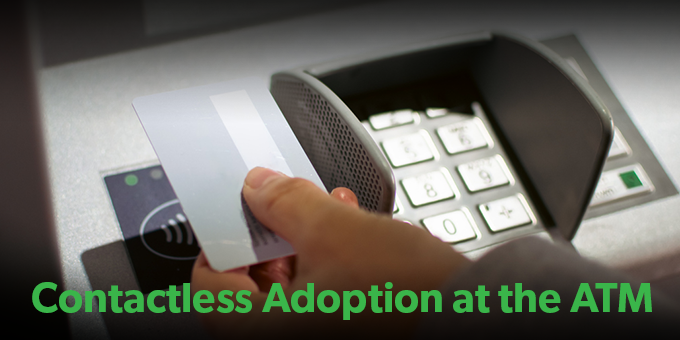Contactless Adoption at the ATM
Publication Date: May 2024
Executive Summary
In the past few years, contactless payment using Near Field Communication (NFC)-enabled EMV chip cards and mobile devices has emerged as a popular method for consumers to make and retailers to accept transactions securely and conveniently. Contactless technology provides an excellent opportunity for ATM owners to offer improved convenience for consumers with the same level of transaction security and integrity as contact EMV transactions. A contactless ATM platform also delivers the ability to implement advanced ATM features and protects against traditional card skimming. This white paper provides information for ATM owners who are planning to implement contactless EMV; it does not cover other forms of touchless payments (e.g., using QR codes).
When adding contactless to ATMs, ATM owners need to understand the differences between the transaction types. While contact EMV transactions require a payment card to be inserted into a terminal, contactless EMV transactions use radio frequencies (RF) to transmit payment information wirelessly. While both rely on technical EMV specifications that are defined and managed by EMVCo, they use different communication protocols and different transaction processes. In addition, transactions from NFC-enabled mobile devices (e.g., mobile phone, wearable) use a tokenized primary account number (PAN), replacing the PAN with a surrogate number.
Consumers are already using contactless payment at many retailers and are familiar with the EMV Contactless Symbol that indicates contactless acceptance. ATM owners should include the symbol on their ATMs when contactless EMV payment cards and NFC-enabled mobile devices are accepted and ensure the placement is in the area with the strongest signal.
As with all new payment technologies, implementers will find challenges with upgrading infrastructure, ensuring security, complying with industry standards and regulations, integrating with legacy systems, and testing the system end-to-end. To ensure interoperability, EMVCo and the payment networks have rigorous certification programs for both payment system components and end-to-end testing. In addition, ATM owners should evaluate the differences in software and hardware when choosing suppliers and are advised to establish collaborative relationships with trusted vendors who can provide guidance and support through implementation.
Through careful planning and implementation with trusted partners, ATM owners can provide consumers with convenient, secure contactless EMV transactions and a better customer experience.
Please note: The information and materials available on this web page (“Information”) is provided solely for convenience and does not constitute legal or technical advice. All representations or warranties, express or implied, are expressly disclaimed, including without limitation, implied warranties of merchantability or fitness for a particular purpose and all warranties regarding accuracy, completeness, adequacy, results, title and non-infringement. All Information is limited to the scenarios, stakeholders and other matters specified, and should be considered in light of applicable laws, regulations, industry rules and requirements, facts, circumstances and other relevant factors. None of the Information should be interpreted or construed to require or promote the establishment of any solution, practice, configuration, rule, requirement or specification inconsistent with applicable legal requirements, any of which requirements may change over time. The U.S. Payments Forum assumes no responsibility to support, maintain or update the Information, regardless of any such change. Use of or reliance on the Information is at the user’s sole risk, and users are strongly encouraged to consult with their respective payment networks, acquirers, processors, vendors and appropriately qualified technical and legal experts prior to all implementation decisions.

